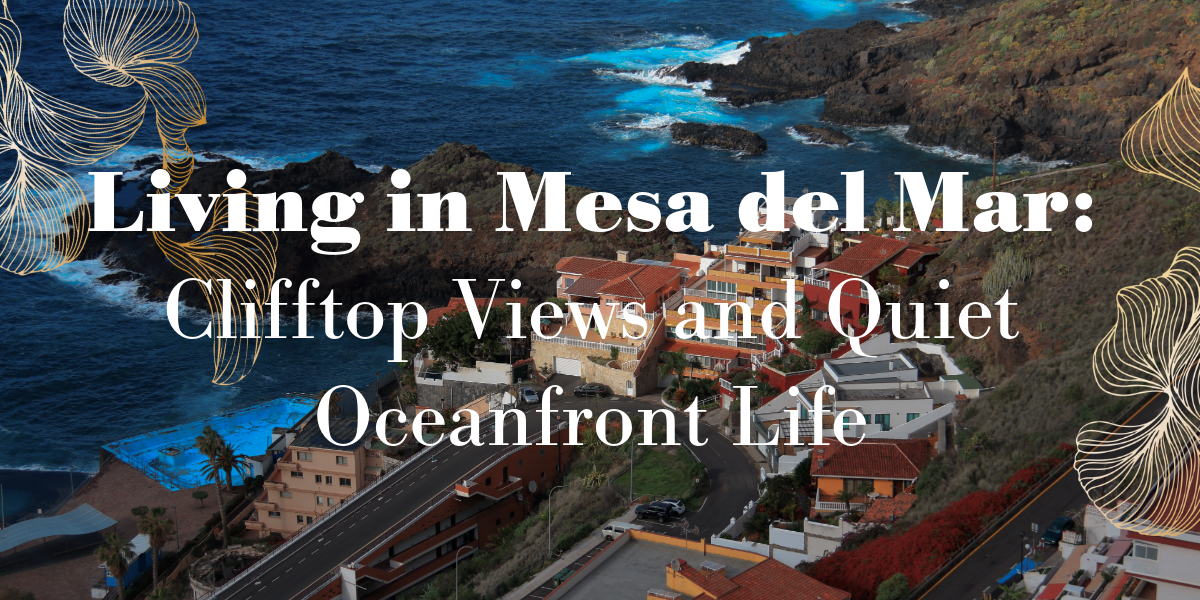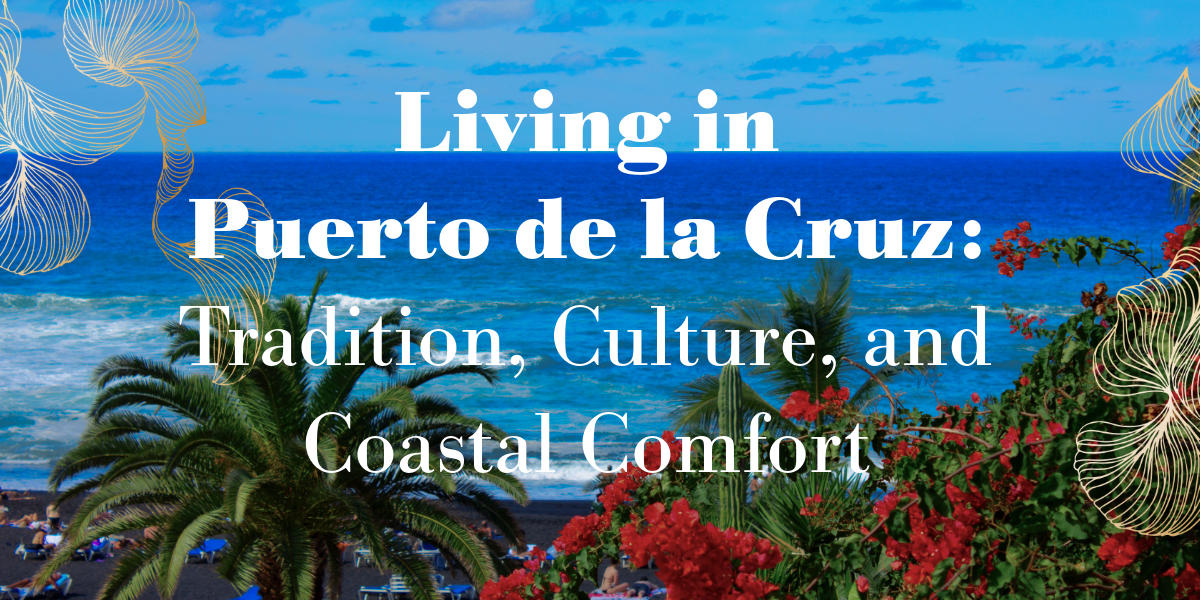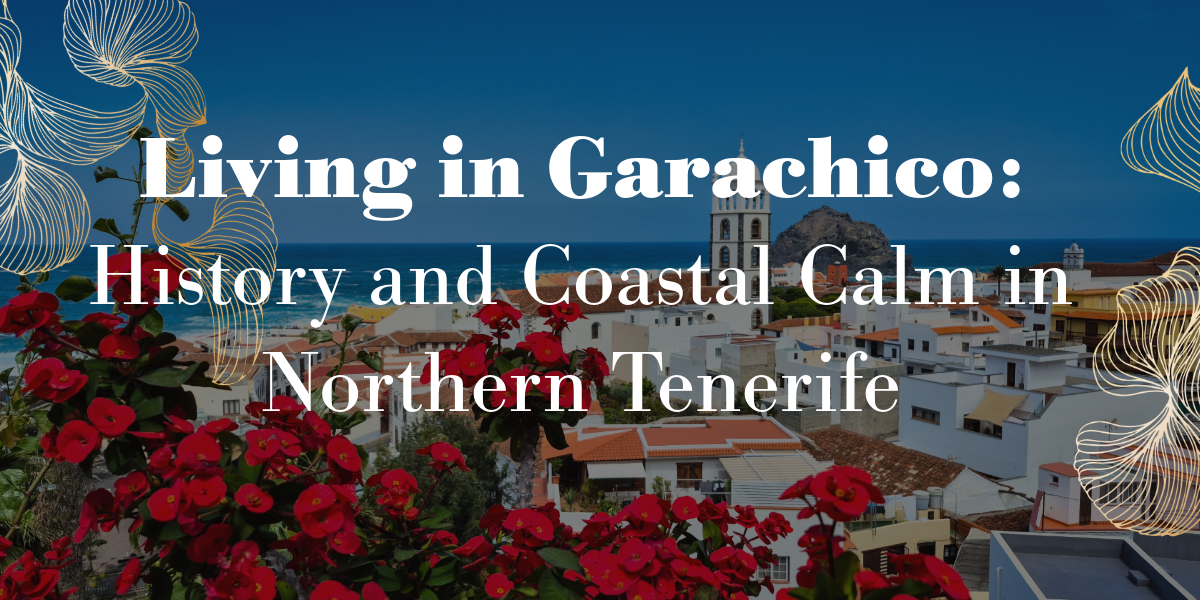Tenerife Tourism Seasons and Weather: A Year-Round Guide for Visitors and Homebuyers
Tenerife is often called the “Island of Eternal Spring,” famed for having no bad weather and being a place you can visit any time of year. This mild climate and vibrant island life attract not only millions of tourists but also people looking to move abroad, buy a second home for winter, or simply experience life on a sunny island. Whether you’re planning a holiday or considering investing in property in Tenerife South, it’s important to understand the island’s high and low tourism seasons, what drives these seasonal changes, and what kind of weather to expect month by month. In this guide, we’ll break down Tenerife’s peak and off-peak seasons, explain why they occur, outline typical weather conditions for each month, and discuss why the quieter low season can be an ideal time to plan a visit or even purchase a property (with a few real estate insights from local experts).
High and Low Tourism Seasons in Tenerife
Year-Round Appeal: Thanks to its subtropical location off the coast of Africa, Tenerife enjoys warm weather year-round (average ~23°C) and sunshine in all seasons. There is truly no “off-season” in the sense of a time when the island is empty – visitors come all year, drawn by the climate and attractions. However, Tenerife does experience noticeable peaks and lulls in tourist numbers throughout the year.
High Season (Peak Periods): The island sees its busiest crowds during the summer and winter holidays. The summer months of July and August coincide with European school vacations, making this period the peak of family tourism – beaches and resorts are at their liveliest and most crowded. Likewise, the winter holiday period (December through early January) brings another surge of visitors, as many travelers seek to spend Christmas or New Year in the sun. In fact, December and January (especially around the holidays) are considered part of Tenerife’s high season. During these peak times, flights and accommodations book up early and prices are at their highest, reflecting the strong demand. If you plan to visit in July–August or late December, expect bustling beaches, vibrant nightlife, and higher costs – and be sure to book well in advance to secure accommodations.
Low Season (Quieter Periods): Outside of the main holidays, Tenerife enters a more relaxed “shoulder” season. Broadly speaking, spring (March to May) and autumn (September to November) are relatively quieter, with fewer tourists and often better deals on travel. In particular, May and October–November are known to offer some of the best value – during these months, accommodation prices can be 30–40% lower than peak season rates, yet the weather remains excellent, around 20–25°C on average. These shoulder months combine good weather with fewer crowds and lower prices, a perfect mix for those who prefer a calmer experience. It’s worth noting that March and April (after winter crowds but before summer) and September (just after summer break) also tend to be on the quieter side.
Why These Seasonal Variations? Tenerife’s seasonal tourism patterns are driven by a few key factors:
-
Climate: The island’s climate is pleasant year-round, but it offers a refuge from extreme weather elsewhere. In winter, Northern Europeans flock to Tenerife for warmth, escaping cold climates (the average winter highs are ~20°C with clear skies. In summer, beachgoers come for sunshine, though Tenerife’s summer heat is moderated by trade winds (no scorching 40°C extremes like mainland Spain).
-
Holiday Schedules: European school and work holidays heavily influence travel times. Families travel in summer when school is out, and many people take vacations around Christmas/New Year and Easter. This leads to summer and late-December peaks, as well as a spike around Easter week (another busy time in spring).
-
Long-Stay Winter Visitors: Tenerife is a favorite winter haven for retirees and remote workers. Starting in October and November, a wave of “snowbird” visitors arrives to spend the winter months in the mild climate. These over-wintering sun-seekers contribute to higher demand (and prices) in late fall and winter. At the same time, summer break travelers (school holidaying families) drive the July–August peak. Essentially, Tenerife has two high-season groups: the winter sun-seekers and the summer holidaymakers.
-
Events: Major events can create mini-peaks. For example, Carnival in Santa Cruz (Feb/Mar) draws many visitors for a short period, and there are festivals in May and October that attract travelers. These are worth keeping in mind, though they mostly affect local areas for a limited time.
In summary, Tenerife’s tourism calendar sees peaks in winter and summer, and lulls in between. The beauty of Tenerife, however, is that even in low season the island is enjoyable – and for many, those months are actually the best time to come to avoid crowds and high costs. Next, we’ll look at what weather you can expect in each month, since “no bad weather” doesn’t mean every month is identical.

Weather in Tenerife by Month
While Tenerife’s climate is mild year-round, there are subtle differences month to month and between the drier south and greener north of the island. Generally, the south coast (Los Cristianos, Costa Adeje, etc.) is warmer and sunnier, while the north (Puerto de la Cruz, La Laguna) is slightly cooler and can be cloudier or see more rain, especially in winter. Here’s a month-by-month breakdown of typical weather conditions (temperatures refer to daytime highs on the coast):
• January: Mid-winter brings pleasant, mild days around 21°C in the south. Evenings can be cool (around 14°C at night). January is one of the cooler and wetter months, with a few rainy days (more frequent in the north) and higher humidity. Overall, expect a mix of warm sun and occasional showers – it’s the greenest time of year. Sea temperature ~19°C, so some brave souls swim, but many find it chilly. (Tip: After the New Year’s crowds leave, January offers a quieter time with mild weather and even slightly lower prices mid-month.)
• February: Similar to January, with average highs around 21°C. It’s actually the coolest month for Tenerife, mainly due to trade winds. The south stays warm enough for sunbathing (you can often get a tan in Playa de las Américas), but the wind can make it feel brisk. There are typically a few rainy days (again more in the north). The ocean remains ~19°C. February’s highlight is the Carnival, so late in the month the island gets lively with festivities. For visitors, it’s a great cultural experience but book early if attending Carnival events.
• March: The start of spring sees temperatures creep up a bit. Average highs reach ~22°C. Rain becomes less frequent compared to mid-winter. You’ll enjoy clearer skies and comfortably warm afternoons, while nights are still cool (15°C or so). Wildflowers bloom in the countryside after the winter rains, making Tenerife look especially lush. March is a shoulder month – generally calm tourism-wise, except if Easter falls in March (bringing a temporary bump in visitors).
• April: A lovely spring month with daily highs around 23°C. Sunny days are common and rainfall is low. The ocean begins to warm slightly (~20°C). April weather is quite reliable for outdoor activities – not too hot, not cold. This is a great time for hiking or exploring the island’s natural parks. Tourism is still moderate (aside from any Easter holiday rush), so you get great weather with relatively few crowds.
• May: The beginning of Tenerife’s long summer season. Average highs reach 24°C, and you’ll see plenty of sunshine. Rain is very scarce in May. The island starts to dry out and the south is almost guaranteed sun. The sea temperature rises to ~21°C – comfortable for most swimmers by late May. This is considered one of the optimal months weather-wise: warm but not too hot, and everything on the island is open and lively. May is also a low-season gem: excellent weather with significantly fewer tourists and lower prices, making it ideal for scouting the island if you’re thinking of purchasing property or settling in.
• June: The summer warmth really kicks in. Highs average 26°C in coastal areas, often higher inland. Blue skies and virtually no rain are the norm. The days are long and sunny – perfect beach weather. Evenings are mild, hovering around 19°C. The ocean is about 22°C. June is still before the peak tourist rush, so it’s a fantastic time to enjoy summer conditions without the full crowds.
• July: Peak summer. Temperatures regularly reach 28°C or more during the day, especially in Tenerife South. It’s hot but usually not extreme thanks to the Atlantic breeze. Zero rain is typical in July. The ocean is warm (~23°C) and every beach is in full swing. This month sees high tourism – expect lively resorts and busy attractions as school holidays begin. If you thrive in a bustling summer atmosphere, July is ideal; if not, you might prefer the earlier summer or autumn months.
• August: Hottest month of the year, with average highs about 29°C and peaks over 30°C in the south. Even the normally cooler north coast can reach mid-20s with humidity. Sunshine is virtually guaranteed, and the sea is at its warmest (~24°C) – perfect for swimming. August is the height of tourist season, with Tenerife at full capacity. It’s a festive, busy time. Do be prepared for crowds and book accommodations far ahead. Also, occasionally a calima (hot wind from the Sahara) can raise temperatures further and bring haze – it’s not common, but it can happen any time in summer.
• September: Late summer brings slightly mellowed heat. Highs around 28°C, very sunny, and ocean water at its peak warmth (~24°C). September often has some of the year’s best weather – hot days, balmy nights, and still almost no rain. Notably, September marks the beginning of the autumn influx: many visitors come now for the warm sea and to extend their summer. Crowds can remain sizable early in the month, but generally less than August. It’s a wonderful month for both beach time and outdoor adventures, just expect popular beaches to still be fairly busy.
• October: Autumn in Tenerife is more like an extension of summer. Daytime temperatures are about 26°C, and the first half of October often still feels very summery. By later in the month, nights get a bit cooler and you might see a few brief showers as the season transitions – but overall weather is still warm and pleasant. The ocean remains around 23°C, so swimming is enjoyable even into late October. Tourist patterns can be mixed: early October may still have leftover crowds from late summer, and then there’s a unique trend of new visitors arriving to spend the winter (long-stay travelers from Europe) which can drive up demand and prices toward the end of the month. In fact, accommodation costs can spike because many Europeans come in October specifically to start their winter in Tenerife. If you don’t mind a bit of crowd and price fluctuation, October offers fantastic weather and the island is lively. For better deals, the second half of October might require booking in advance, as it’s a popular time for seasonal renters.
• November: A transition into Tenerife’s winter season. Highs average 23–25°C during the day, and the weather is generally mild and comfortable. You will notice more cloud cover and some windy days in November, and occasional rain showers start to appear (though typically only 4-5 rainy days in the month). The island is still much warmer than most of Europe, so it remains a popular time for visitors seeking late autumn sun. The sea begins cooling to ~21°C but is often still swimmable. November is a bit of a paradox: weather-wise it’s still lovely for outdoor activities, but it has become one of the more expensive months to visit due to high demand from long-term winter visitors (many apartments and rental cars are booked out, driving prices up). For a traveler or prospective homebuyer, November offers the last of the autumn warmth, but you’ll be dealing with peak-season pricing on many services. Planning ahead is key if visiting now.
• December: Winter returns, but in Tenerife that means warm days ~22°C on average. This month actually often has greener landscapes thanks to occasional rain showers early in winter. Expect a mix of sunny days and some cloudy or misty ones, with about 5-6 days of rain scattered through the month (more likely in the north, while the south stays relatively drier). Evenings can be cool (around 15°C) and on Tenerife’s high Mount Teide you might even see snow-capped peaks in December – a beautiful contrast to the sunshine on the coast. It’s comfortable for hiking and touring around. Sea temperature drops to ~20°C by late December, which many people find too cold for swimming. The first half of December can be a delightful quieter period to visit (pleasant weather and moderate crowds). By the Christmas period, tourism surges – late December is peak high season with holiday travelers, so prices for flights and hotels jump accordingly. If you plan to spend Christmas or New Year’s in Tenerife, book early and be ready for a festive, bustling atmosphere.
As you can see, Tenerife truly lives up to its “eternal spring” reputation with agreeable weather in every month, just with different nuances. Whether you prefer the buzz of summer heat or the gentle warmth of winter, the island has something to offer. Understanding these monthly patterns helps in planning the ideal time for your needs – be it a fact-finding trip for relocation, a winter escape, or a classic beach holiday.

Why Low Season Can Be a Smart Time to Buy Property
If you’re contemplating buying property in Tenerife South or securing a winter home on the island, timing your visit and purchase strategically can make a difference. Many real estate experts suggest that the low (off-peak) season is an opportune time for property buyers. Here’s why:
-
Easier Viewing and Exploring: In low season, there are fewer tourists around, meaning you can explore neighborhoods and visit properties at a relaxed pace. You won’t be fighting holiday crowds, and you can get a more authentic feel for the local lifestyle when the tourist rush is gone. Sellers and real estate agents often have more time to dedicate to you in these quieter months, making the search process more comfortable and personalized.
-
Better Travel Deals for Scouting Trips: As mentioned, off-peak months like May or October not only have great weather but also come with lower costs for flights and accommodation. If you need to fly in to view properties, doing so during low season can save money. Cheaper travel and lodging mean you could stay longer or make multiple trips to find the right home, without the premium pricing of high season.
-
Potentially More Negotiating Power: The property market in Tenerife is active year-round, but some sellers might be more flexible during the quieter months. For instance, a homeowner who also rents their property to tourists might prefer to sell during low season, after they’ve earned the high-season rental income. As a buyer, you might face less competition from other foreign buyers during off-peak times, which could translate to a better deal or more room to negotiate on price and terms.
-
See the “Real” Tenerife: Experiencing Tenerife in low season is valuable if you plan to live part- or full-time here. You’ll see what the island is like when it’s not in full tourist mode – how busy the towns are, what the traffic is like, how easy it is to get restaurant reservations, etc. This is important for a future homeowner. You’ll also witness the climate at a different time of year (perhaps the mild winter or tranquil spring), confirming that it suits your lifestyle (for example, many find Tenerife’s winter weather ideal for daily life – warm but not too hot).
-
Professional Guidance is Readily Available: During the low season, local professionals such as real estate agents, lawyers, and advisors usually have more availability. You can schedule detailed consultations without the rush. For example, Luxury World Properties – a real estate agency based in South Tenerife with over 26 years of local expertise – offers personalized services to guide buyers through every step of finding and purchasing a home. In a calmer period, agencies like this can often dedicate even more time to helping you explore different areas (perhaps a tour of properties in Costa Adeje vs. Los Cristianos) and answering your questions about relocation, legal paperwork, or market trends.
It’s worth clarifying that Tenerife’s property market doesn’t exactly have a “season” – good opportunities can come up any time. However, aligning your buying trip with the tourism low season can make the experience smoother and potentially more cost-effective. You’ll combine your research with a delightful low-key visit to the island. And if you do decide to buy, you’ll be ahead of the curve before the next high season influx.

Embracing Tenerife Year-Round
In conclusion, Tenerife offers a fantastic year-round lifestyle: warm weather in January that would count as summer in many countries, a summer season that never gets unbearable, and spring and autumn periods that many consider the island at its best. Understanding the high and low tourism seasons helps you plan when to come for a visit or house-hunting trip. High seasons (Jul–Aug and late Dec) bring energy and excitement, but also crowds and higher prices. Low seasons (spring and fall months) bring tranquility, local charm, and savings – not to mention very comfortable weather and an easier pace of life.
For those thinking of moving abroad or buying property here, this knowledge is even more valuable. It lets you schedule trips at optimal times and perhaps seize advantages that casual tourists might miss. With its “eternal spring” climate, modern infrastructure, and welcoming culture, Tenerife continues to be a top choice for second-home buyers and expats seeking sunshine and quality of life. And when you’re ready to take the next step, remember there are experienced professionals like Luxury World Properties ready to assist you in navigating the Tenerife real estate market with expert advice and personalized service.
Ultimately, Tenerife is an island you can enjoy in any season – it’s all about finding the right moment that fits your plans. Whether you come to soak up the sun in peak summer, escape the cold in winter, or scout out that perfect coastal home during the peaceful off-season, Tenerife’s unique blend of climate and culture will be waiting to welcome you. Here’s to making the most of Tenerife’s seasons, and maybe even calling this beautiful island “home” one day!
Sources:
-
Tenerife Travel Tips – Seasons & Weather in Tenerife by Monthtenerifetraveltips.comtenerifetraveltips.com
-
GVI Travel Blog – Best Time to Visit Tenerife (Crowds and Budget considerations)gviusa.comgviusa.com
-
Radical Storage Travel Guide – Tenerife Cost Guide 2025 (Seasonal price variations)radicalstorage.comradicalstorage.com
-
Holiday Hypermarket – Tenerife Weather by Month (Average temperatures)holidayhypermarket.co.ukholidayhypermarket.co.uk
-
Low Season Traveller – Tenerife Overview (When to go to avoid crowds)lowseasontraveller.com
-
Luxury World Properties – Official Website (Real estate services in South Tenerife)
Artículos recientes

26 de septiembre de 2025 26/09/2025
Living in Mesa del Mar: Clifftop Views and Quiet Oceanfront Life
Mesa del Mar is a small, secluded coastal village…

26 de septiembre de 2025 26/09/2025
Living in Puerto de la Cruz: Tradition, Culture, and Coastal Comfort
Puerto de la Cruz is the beating heart of norther…

26 de septiembre de 2025 26/09/2025
Living in Güímar: A Blend of Rural Charm and Coastal Convenience
Güímar is a traditional town located on the south…

22 de septiembre de 2025 22/09/2025
Living in Garachico: History and Coastal Calm in Northern Tenerife
Garachico is one of Tenerife’s most picturesque t…

7 de agosto de 2025 07/08/2025
Living in Chayofa: A Peaceful Hillside Retreat Near the Action
Chayofa is a quiet, green hillside village locate…